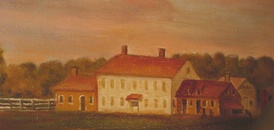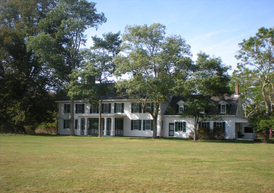William Floyd, signer of the Declaration of Independence, was born in this house and later ran a large plantation on the property. Free and enslaved laborers worked in both the house and fields, the beginnings of the community which sprung up around this Mastic, Long Island estate.

William Floyd Estate
William Floyd, the first son of Nicoll and Tabitha Floyd, was born on the south shore of Long Island in 1734. His father purchased the Mastic Beach property in 1724 and built the Old Mastic house to serve as the family's home.
The Floyds were a prominent family and William quickly developed a successful career in politics at national, state, and local levels while maintaining the family plantation. Labor-intensive agricultural crops as well as cattle, sheep, hogs, and fowl all required tending. Floyd relied on both free and enslaved labor on the farm and domestic help in the manor house. The Federal Census of 1790 records that the William Floyd household held 14 people as slaves, and five free people of color. Over the next 20 years the Floyds owned fewer people of African descent and employed more, keeping the number of people of color roughly the same on the estate.
Many other people lived in the vicinity of the estate and found work with the Floyds. Native Americans from the Unkechaug tribe were settled on the nearby Poosepatuck Indian Reservation as early as 1700. Unkechaug peoples married with free and enslaved African Americans, and their descendants remain in the area.
Today, the William Floyd Estate is owned and operated by the National Park Service. Memories and histories captured in paintings and writings by members of the Floyd family reflect African American and Native American laborers at the farm. A cemetery on the estate is preserved and remembers those enslaved for their labor, many owned by William Floyd whose signature appears on the Declaration of Independence.
This entry contributed by the Center for Public Archaeology at Hofstra University





